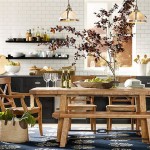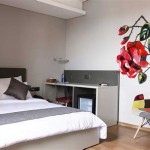How to Decorate with Leather Recliners: A Guide to Sophisticated Comfort
Leather recliners offer a unique blend of comfort, luxury, and durability, making them a popular choice for living rooms, entertainment spaces, and even home offices. Integrating these substantial pieces into a room's design requires thoughtful planning to achieve a cohesive and aesthetically pleasing environment. This article provides practical guidance on how to incorporate leather recliners effectively into various interior design schemes.
The inherent richness of leather, combined with the recliner's functional features, presents both opportunities and challenges in decorating. Proper placement, color coordination, and the selection of complementary furnishings are crucial to avoid overwhelming a space or creating a visually disjointed look. By considering the characteristics of leather and the functionality of recliners, it is possible to seamlessly integrate these pieces into a range of design styles, from classic to contemporary.
Choosing the Right Leather Recliner
The selection of a leather recliner is the foundation of a successful decorating strategy. Several factors should be considered before making a purchase, including the size of the room, the desired aesthetic, and the lifestyle of the occupants. These considerations impact the selection of both style and color, consequently impacting the décor.
Start by measuring the available space. Recliners, particularly when extended, require a significant footprint. Ensure that the chosen recliner fits comfortably within the room without obstructing pathways or overwhelming the other furniture. Consider the height of the recliner as well; a high-backed recliner can visually dominate a room with low ceilings, while a lower-profile recliner might be a better choice.
Next, assess the leather type. Full-grain leather is the most durable and luxurious, showcasing the natural markings and imperfections of the hide. Top-grain leather is also of high quality, offering good durability and a smoother surface. Split-grain leather, often used for the back and sides of recliners, is less expensive but may not be as resilient. Think about the color. Classic colors, such as black, brown, and tan, are versatile and easily integrated into various design schemes. However, depending on the overall design, bolder colors, such as navy or even a deep red, can make a statement.
Placement and Arrangement Strategies
The placement of a leather recliner significantly impacts the room's functionality and visual appeal. Carefully consider the room's layout, focal points, and traffic flow when determining the optimal location. Think about both the style of the recliner and the shape of the room.
In living rooms, a leather recliner often serves as a primary seating option, potentially taking the place of a sofa or supplementing existing furniture. Position the recliner near a window for natural light or near a fireplace for a warm and cozy ambiance. Ensure that the recliner is placed in a position where it can be reclined fully without hitting walls or other furniture. If there are multiple recliners, arrange them in a way that encourages conversation and social interaction, such as facing each other or angled towards a central coffee table.
In smaller spaces or home offices, a single leather recliner can create a comfortable and functional relaxation area. Place the recliner in a corner or against a wall to maximize space utilization. If the office is small, consider the size of the recliner. A more compact version may be necessary to avoid overcrowding the workspace. Adding a small side table nearby provides a convenient surface for drinks, books, or a laptop.
Incorporating Color and Texture
The color and texture of a leather recliner play a vital role in its integration into the overall design scheme. Consider the existing color palette and the desired aesthetic when selecting a recliner's color. Moreover, consider the surrounding textures.
Neutral-colored leather recliners, such as beige, gray, or off-white, provide a versatile base that complements a wide range of décor styles. They can be easily paired with colorful throw pillows, blankets, and rugs to add pops of interest and personality. A brown or black leather recliner can serve as a grounding element, especially in rooms with lighter color schemes. Consider the sheen. Glossy or matte both provide different looks, which will impact the room’s appearance.
The texture of the leather is equally important. Smooth, polished leather creates a sleek and modern look, while distressed or textured leather adds character and visual interest, particularly in rustic or traditional settings. Consider layering textures within the room to create visual depth and warmth. Combine the leather recliner with a plush rug, a textured throw blanket, and decorative pillows in various materials, such as velvet, cotton, or linen.
Selecting Complementary Furnishings
Surrounding a leather recliner with the right furnishings helps to create a cohesive and inviting space. Choose furniture pieces that complement the recliner's style, color, and size.
A coffee table is a central element in most living room arrangements. Choose a coffee table that is appropriately sized for the recliner and the surrounding furniture. A glass-top coffee table or one with a light-colored finish can help to create a more open and airy feel, while a solid wood coffee table adds warmth and a grounding element. Side tables provide convenient surfaces for lamps, drinks, and other essentials. Choose side tables that are the right height and style to complement the recliner. Consider the materials. Using wood or metal side tables will add a cohesive appearance.
Lighting is crucial for setting the mood and enhancing the functionality of the space. Incorporate a combination of ambient, task, and accent lighting to create a warm, inviting atmosphere. A floor lamp placed beside the recliner provides focused task lighting for reading or other activities. Table lamps on side tables add ambient lighting and can be used to highlight artwork or decorative objects. Consider the position of the recliners and ensure there are adequate lamps to provide light.
Accessorizing and Adding Finishing Touches
Accessories and finishing touches can transform a room with a leather recliner from functional to stylish. These details add personality, visual interest, and a sense of completeness.
Throw pillows and blankets are essential accessories for any leather recliner. Choose pillows in various sizes, shapes, and textures to add comfort and visual interest. Consider using a range of colors and patterns that complement the recliner's color and the overall design scheme. A cozy throw blanket draped over the recliner adds warmth and a touch of elegance. Choose a blanket in a contrasting color or texture to add a pop of visual interest. Another option is to place a tray on an ottoman to hold books, drinks, or decorative items. The possibilities are endless, depending on personal preference.

5 Simple Tips For Decorating With Leather Recliners To Fit Any Space Pottery Barn

Pin On Decor
:strip_icc()/102355260-80861456a9fb4596836629e5d155b6eb.jpg?strip=all)
5 Ways To Decorate With Leather Furniture

Decorating With Leather Furniture 3 Tips You Ve Gotta Know Nell Hill S

Pin By Alma Cantu Torrez On Home Decor Faves Living Room Recliner Brown Remodel
:strip_icc()/leather-sofa-living-room-ideas-2-proem-studio-white-oak-bbcb9cff21384c118adb7d407a843ebc.jpeg?strip=all)
23 Living Rooms With Leather Sofas That Look Incredible
:strip_icc()/102709366-ac6109a59bb5475089f803f57cf2ea48.jpg?strip=all)
5 Ways To Decorate With Leather Furniture

How To Visually Lighten Up Dark Leather Furniture Couches Living Room Brown Couch

Styling Tips That Make A Difference When Decorating Living Room With Recliners In My Own Style

Living Room Layouts For Recliner Chairs Mobility Furniture Company
Related Posts







